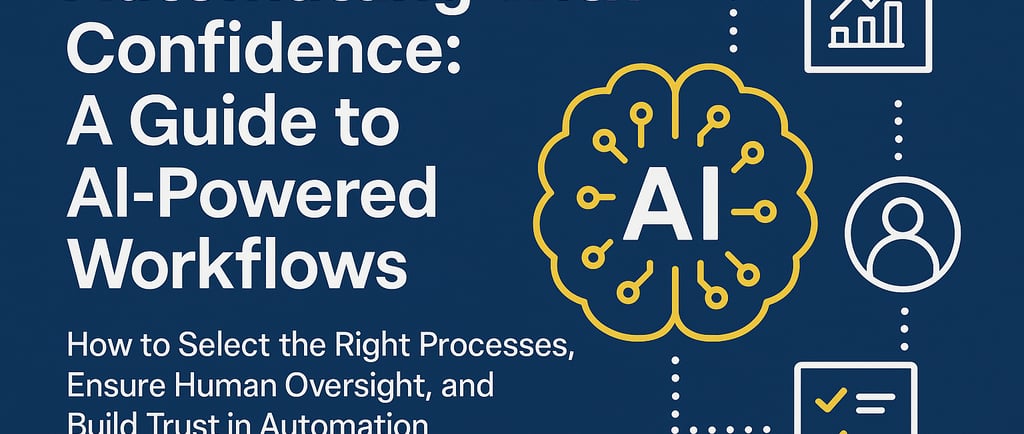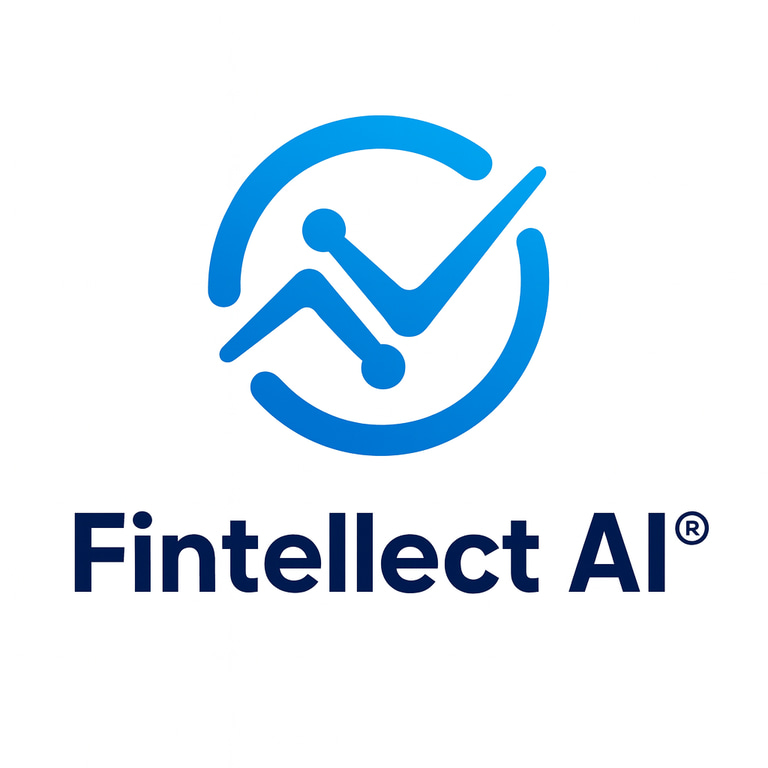AI in Finance: From Awareness to Mastery: Automating with Confidence
How to Select the Right Processes, Ensure Human Oversight, and Build Trust in Automation
CFO INSIGHTS
Zhivka Nedyalkova
4/23/20253 min read


How to Select the Right Processes, Ensure Human Oversight, and Build Trust in Automation
Automating with Confidence in an AI-Driven Financial World
In the previous article from our 'AI in Finance: From Awareness to Mastery' series, we demystified key AI concepts and laid the groundwork for understanding intelligent systems in finance. Now, we move from theory to application.
Automation is no longer just a buzzword—it’s becoming the backbone of modern finance. From lightning-fast reporting to continuous forecasting, artificial intelligence has opened new frontiers in efficiency, scalability, and accuracy. But true automation is more than speed; it’s about knowing when, where, and how to apply AI without sacrificing human judgment or accountability.
This article takes you beyond generic tech optimism. Instead, it focuses on practical, finance-specific automation strategies that blend machine intelligence with critical human insight. You’ll learn how to select the right processes, maintain control at key decision points, and foster trust in AI through explainability and transparency—so your workflows don’t just move faster, they move smarter.
1. Automating the Right Processes: When AI Adds Real Value
Not everything should be automated. Some processes require human judgment, others thrive under algorithmic speed and precision.
What to Automate:
Repetitive, rules-based tasks
Data-heavy operations with predictable patterns
Monthly reporting, budget consolidation, and cash flow forecasting
What Not to Automate Without the Right Safeguards:
Strategic planning under uncertainty
Interpretative tasks involving ethics or tax regulation—unless supported by Explainable AI (XAI) and Trustworthy AI frameworks
Subjective decision-making without contextual training data or human review
Example: AI for Monthly Financial Reporting AI can extract general ledger data, categorize transactions, and produce Income Statements in real-time. But the CFO still needs to interpret variances and communicate implications.
Example: Budget Aggregation Using NLP Tools Departmental inputs can be parsed and normalized using natural language processing, then aligned with strategic KPIs. But final trade-offs and budget approvals remain human-driven.
2. How AI Speeds Up Reporting, Budgeting & Forecasting
🔹 Rolling Forecasts with Time-Series AI Models Using ARIMA or Prophet, systems can forecast future revenues and costs by recognizing seasonal trends and external shocks. These models adapt as new data arrives.
🔹 Template-Driven Board Reports Tools like FinTellect AI automate the creation of customized financial dashboards, auto-filling KPIs, performance trends, and narrative summaries—ready for different stakeholders.
Example: Quarterly Forecast Adjustments An AI system revises your forecast automatically when marketing expenses rise 15% MoM, updating your cash position and highlighting deviation causes.
3. Human-in-the-Loop: Safeguards, Not Shortcomings
AI systems excel at detection—not decision-making. Human-in-the-Loop (HITL) is vital for oversight.
🔹 Where Human Oversight Is Essential:
Final budget approvals
Interpretation of flagged anomalies
High-risk resource allocations
Example: AI Flags Expense Irregularities A finance assistant using anomaly detection flags a large catering invoice. Human review reveals it was for a company-wide offsite—a justified deviation, not fraud.
4. Tools That Classify and Validate Transactions Accurately
In the world of financial automation, accuracy is non-negotiable. While speed is often celebrated, it's the precision and contextual awareness of AI tools that determine their true value in classifying and validating transactions.
Today’s best systems combine rule-based logic with adaptive machine learning. Tools like QuickBooks and Xero provide automated categorization features based on vendor names and historical behavior. More advanced platforms go further by applying natural language processing (NLP) and contextual learning to decode vague descriptions and dynamically adjust classifications.
However, technology alone isn’t enough. Effective automation requires a structured process:
Confidence thresholds ensure only high-certainty classifications are accepted automatically.
Low-confidence predictions are escalated to human review, preventing costly errors.
A full decision log provides transparency for internal controls and external audits.
Example: Cross-Border Vendor Misclassification
An AI engine initially tags a transaction under “Consulting” due to keyword associations. But a finance expert in the local jurisdiction recognizes the need for it to be classified as “Temporary Staffing” based on nuanced tax rules. This human review not only corrects the current record but also feeds back into the model, improving future accuracy.
In this way, classification becomes a living system—learning from both data and human expertise to reach higher levels of automation without losing oversight or compliance.
5. Building Trust Through XAI and Traceability
Without explainability, AI becomes a black box. Explainable AI (XAI) allows finance teams to understand why an AI made a specific suggestion.
🔹 What Builds Trust:
Decision logs with justifications
Overridable suggestions with feedback capture
Accuracy tracking over time
Example: KPI Alert with Justification Instead of a generic alert, your dashboard shows: “Operating Margin dropped 5% due to 12% YoY increase in logistics costs.” The 'why' empowers decision-makers.
6. Don’t Fall for “Macros with Makeup”
Not all automation is created equal. Many tools that claim to be AI-driven are glorified macros.
Red Flags:
No learning or model updates
Static rules without adaptation
No context integration
True AI Does:
Learn from past data
Adapt to new patterns
Improve with human feedback
Example: Dynamic Cash Management Tool Rather than issuing static reminders, a real AI system recommends short-term investments, expense deferrals, or internal fund reallocations—based on live trends and learned patterns.
Strategic Automation Requires Strategic Thinking
The goal isn’t to eliminate human input—it’s to amplify it.
By understanding which tasks are ripe for AI, keeping humans in key checkpoints, and insisting on transparency and traceability, finance leaders can unlock the full power of automation—confidently, ethically, and effectively.
The future isn’t human vs machine. It’s human with machine—by design, not by accident.
